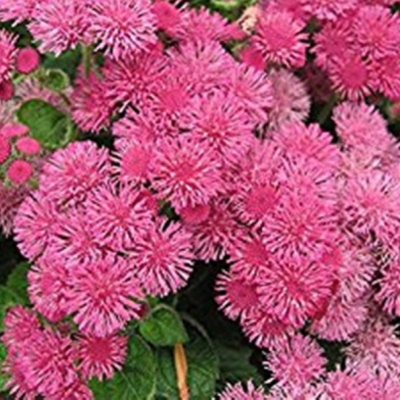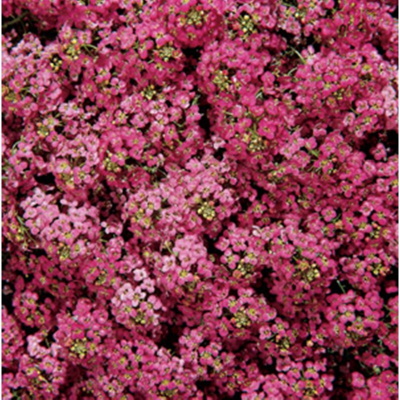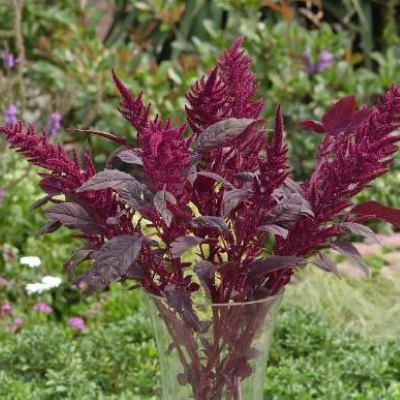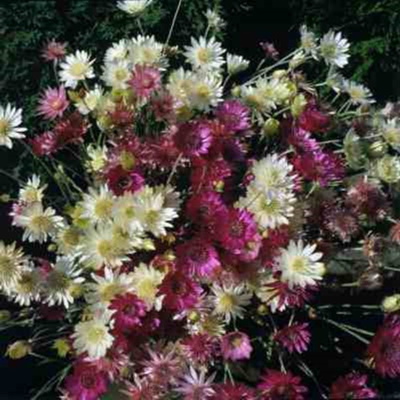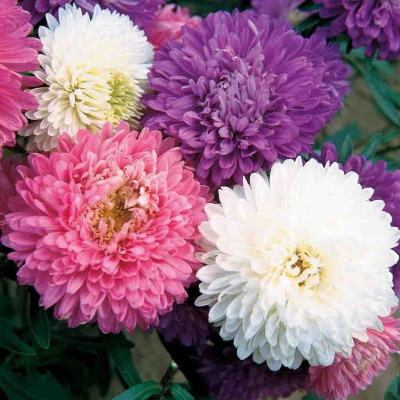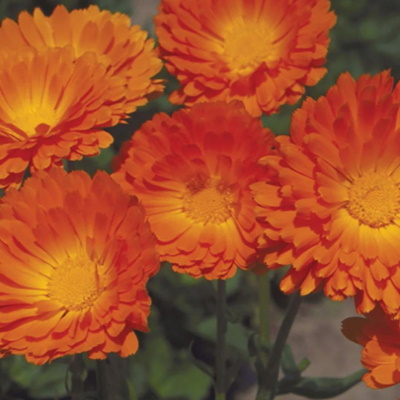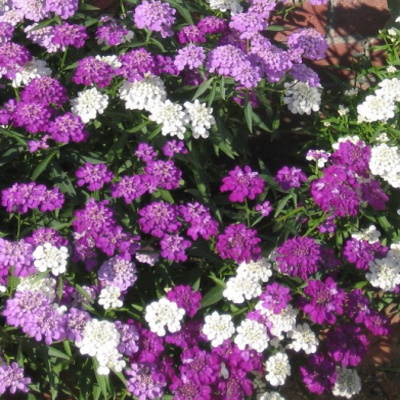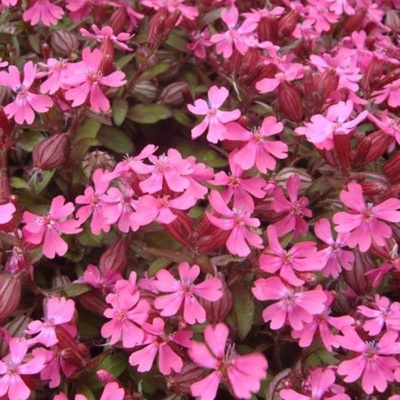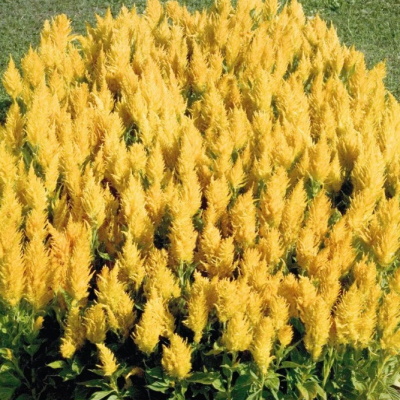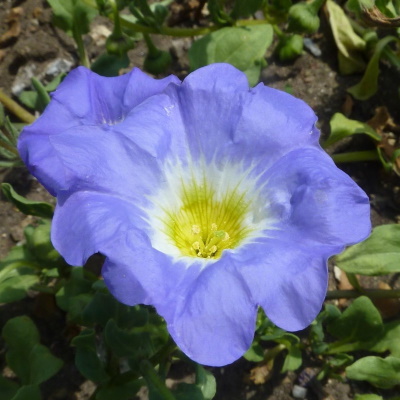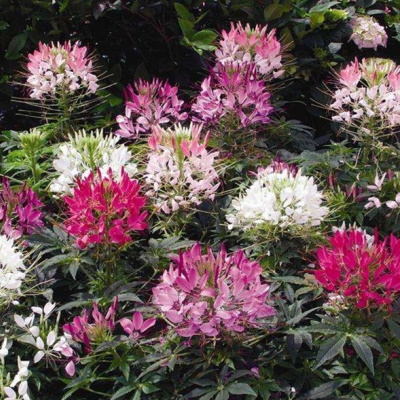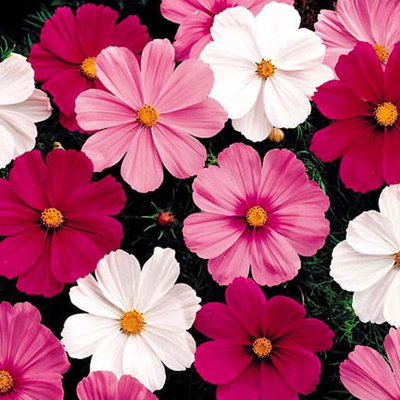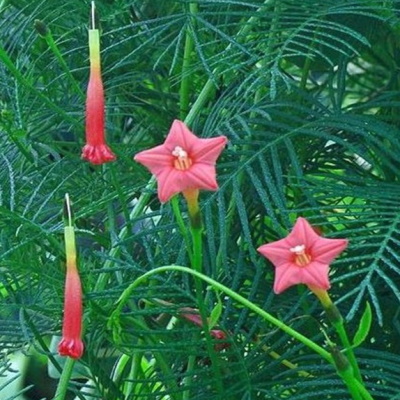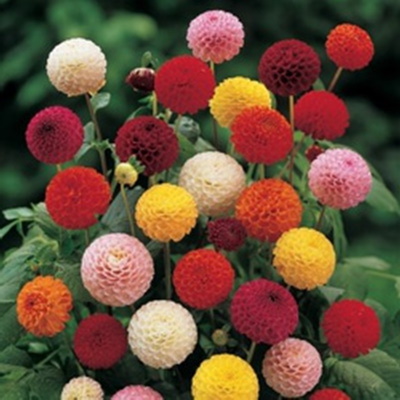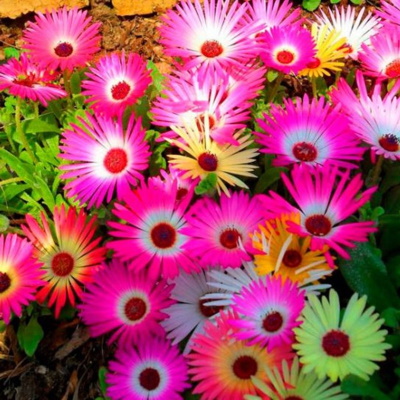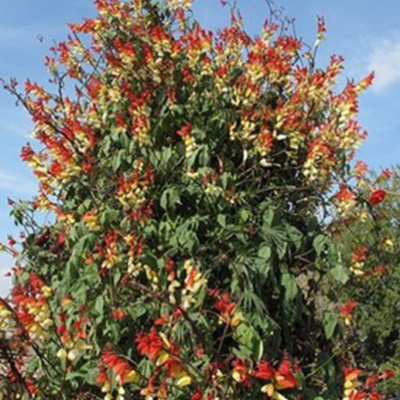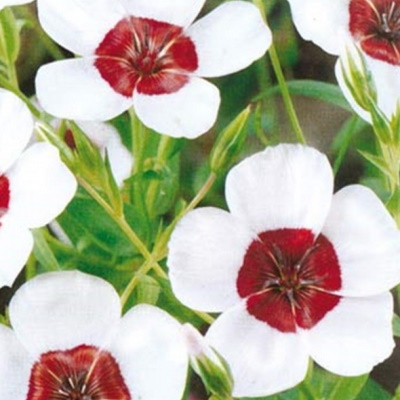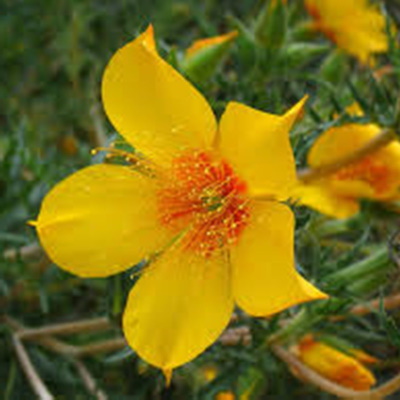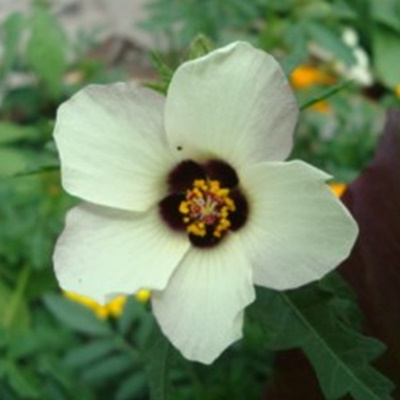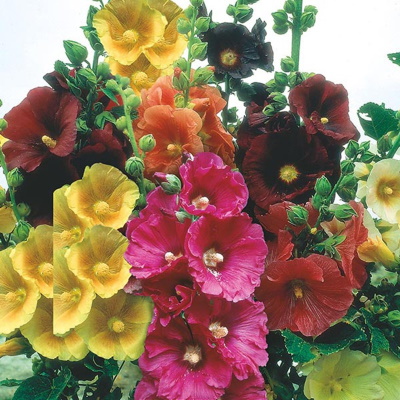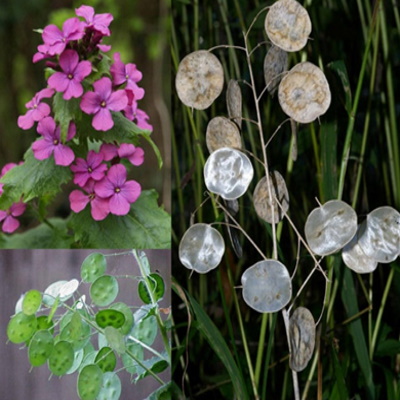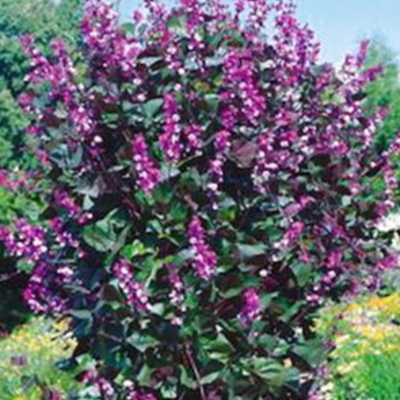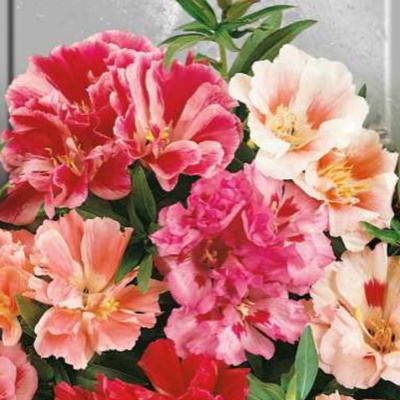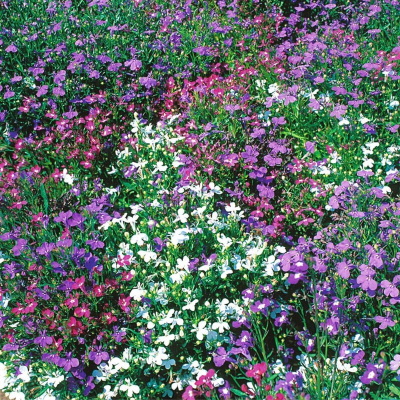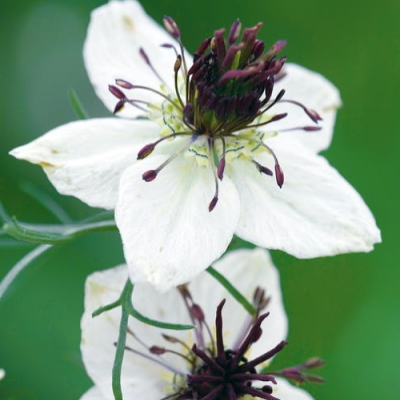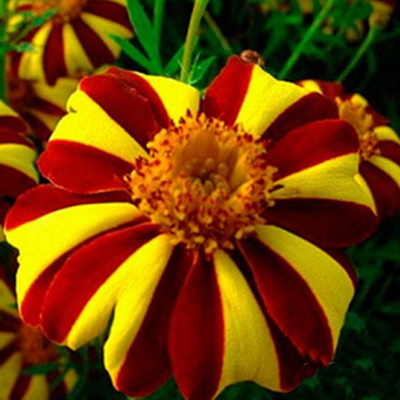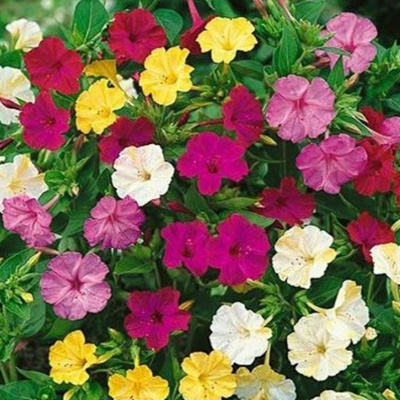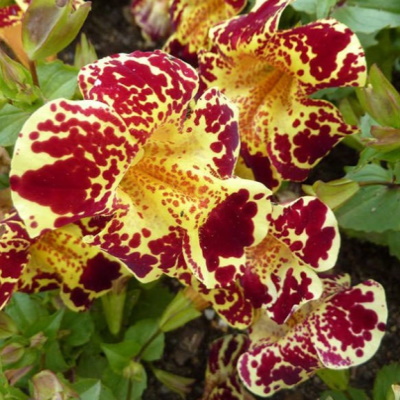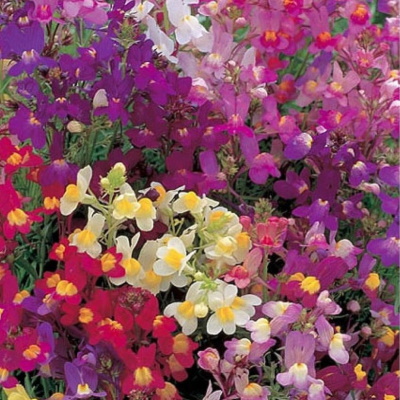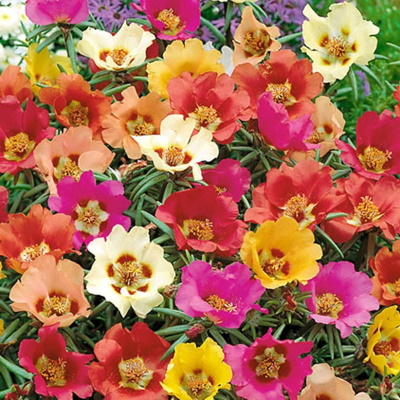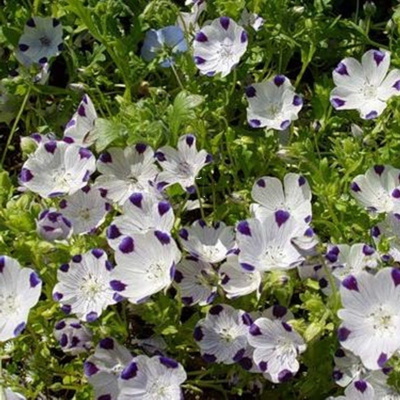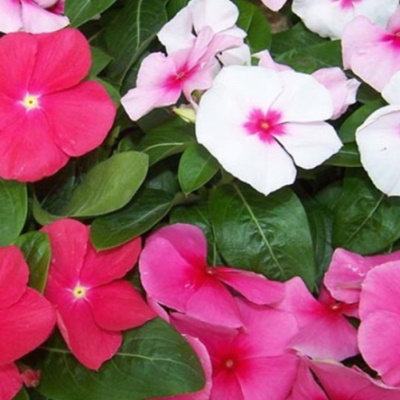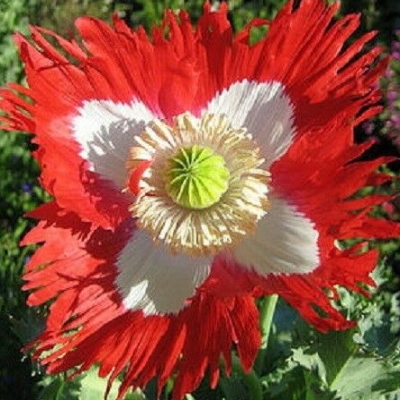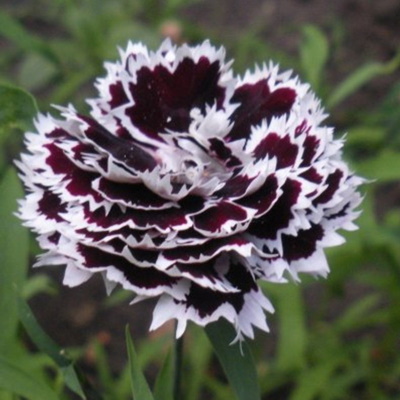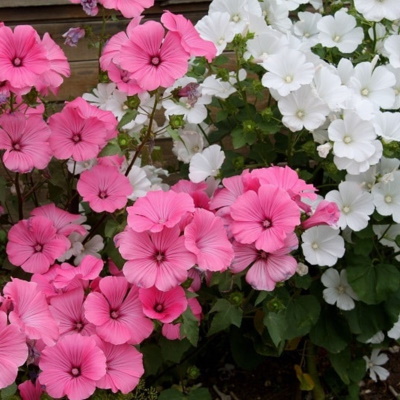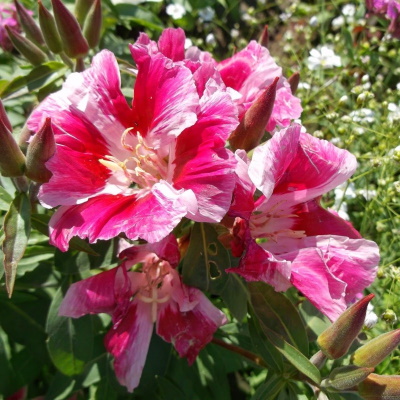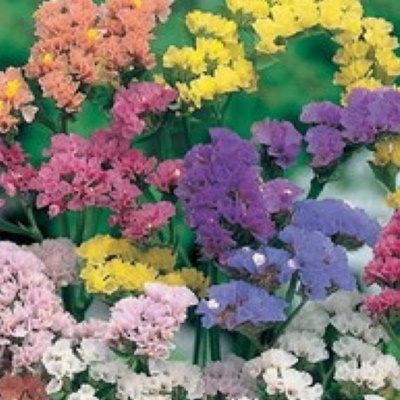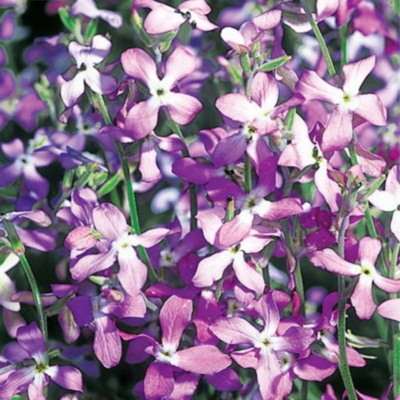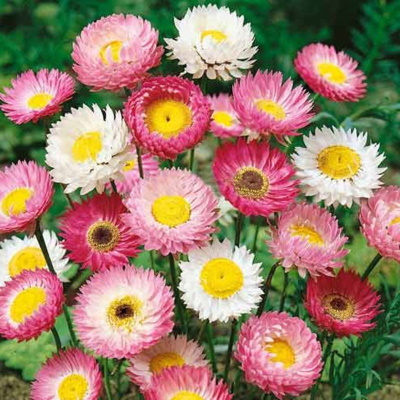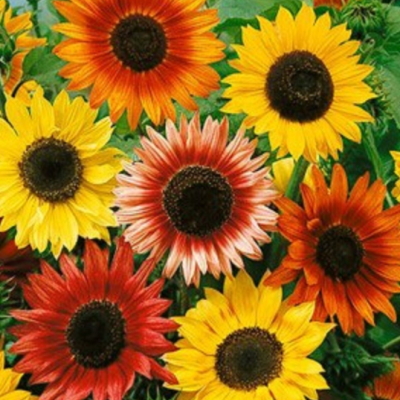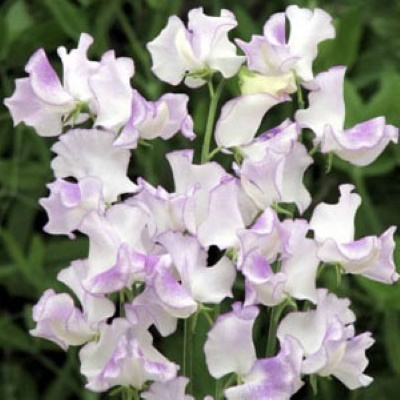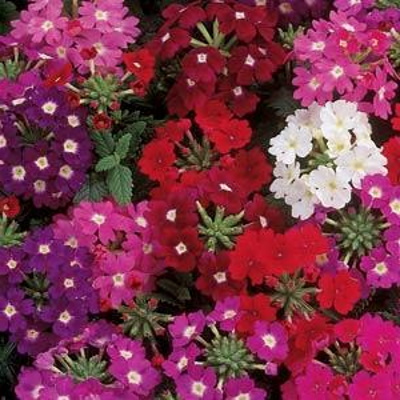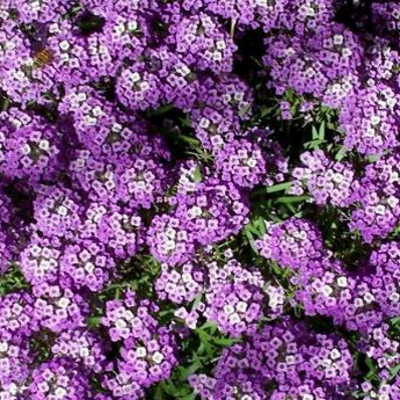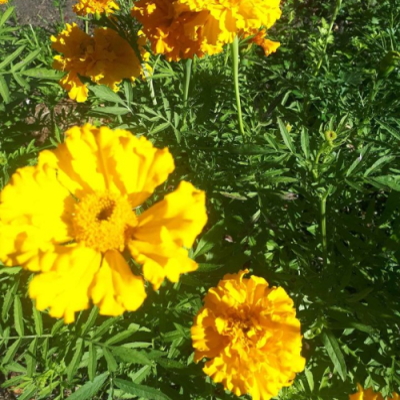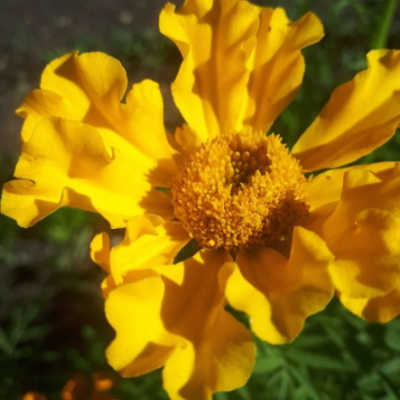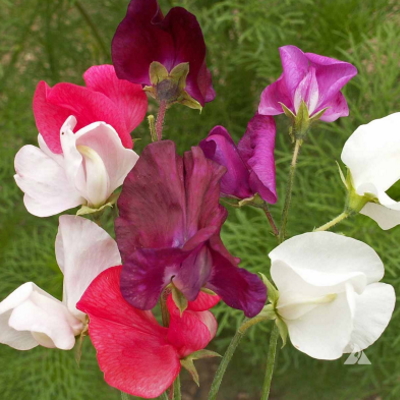-
Out of stock
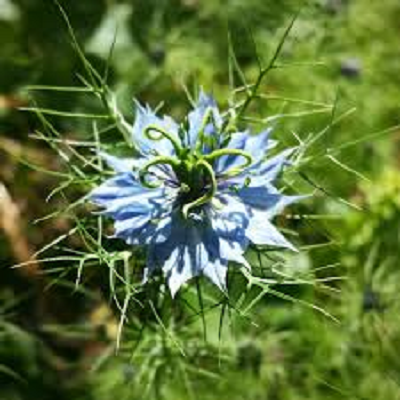
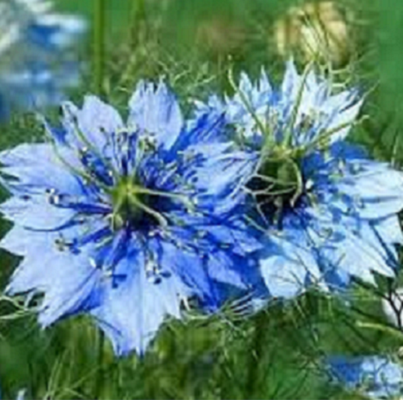 Nigella damascena. Persian Jewels Nigella seeds are also known as Love-in-a-Mist. Its delicate appearance belies its hardy, dependable nature. Pale as a baby flower, Persian Jewel matures to intense shades of violet, blue, white, and pastels in between. Each flower emerges from a tangle of lacy foliage. After blooming, curious-looking fruits ripen, dry, and eventually release seeds for the next season. These distinctive seed heads can be dried for flower arrangements. Everlasting flowers are grown especially for its spiky decorative seed pods. Germinates 10–14 days at 60°. Grow on at 60–65°. Set transplants 6–9" apart. For continuous bloom, direct seed weekly until June. Nigella grows 20–50cm (8–20") tall.
Nigella damascena. Persian Jewels Nigella seeds are also known as Love-in-a-Mist. Its delicate appearance belies its hardy, dependable nature. Pale as a baby flower, Persian Jewel matures to intense shades of violet, blue, white, and pastels in between. Each flower emerges from a tangle of lacy foliage. After blooming, curious-looking fruits ripen, dry, and eventually release seeds for the next season. These distinctive seed heads can be dried for flower arrangements. Everlasting flowers are grown especially for its spiky decorative seed pods. Germinates 10–14 days at 60°. Grow on at 60–65°. Set transplants 6–9" apart. For continuous bloom, direct seed weekly until June. Nigella grows 20–50cm (8–20") tall. -
Sale!Out of stock
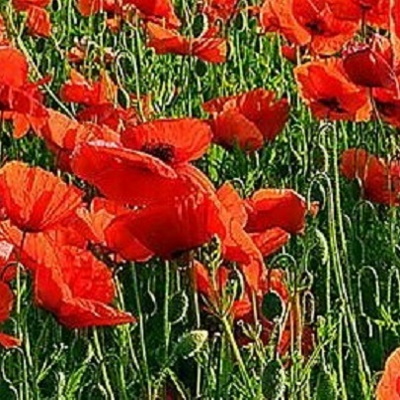
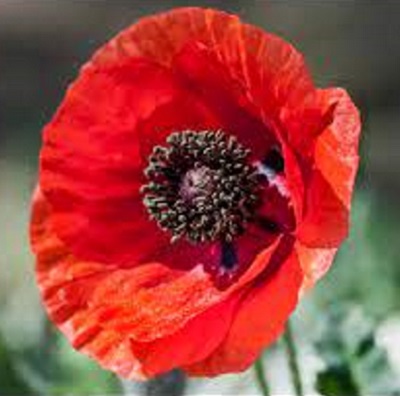
Description
Flanders Field Poppy Seeds is an Heirloom Flower. These very symbolic WWI flowers were the common field poppies of Europe. The brilliant crimson, single red blooms with black centres that are long-blooming and very pretty in the garden. These poppies will reseed themselves and can naturalize in your garden. Plants grow to 45 cm (18″) tall in the garden.How to Grow
Sow directly outdoors for the best results. Select a sunny site with well-drained soil. Barely cover the seed with soil and keep moist through the 5-10 day germination period. Enjoys full sun to partial shade location. -
Out of stock
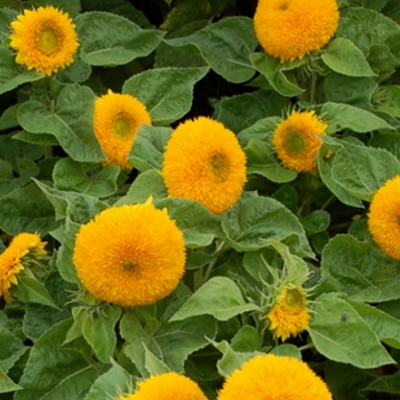
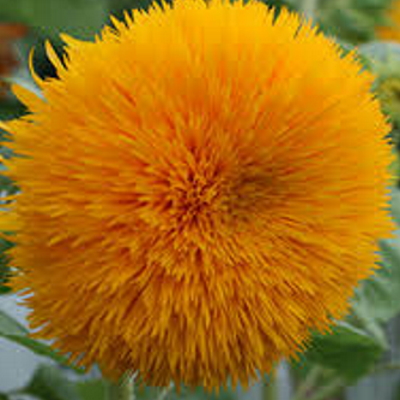 Sunflower ‘Teddy Bear’ is a short, bushy plant with fluffy, golden-yellow blooms that appear from mid-summer to the first frost in autumn. The mature size of Teddy Bear sunflower plants is 4 to 5 feet (1.4 m.). Growing Teddy Bear sunflowers by seed isn’t complicated. The most important thing is to plant seeds where your Teddy Bear sunflower plants will be exposed to full sunlight. Well-drained soil is also an absolute requirement for any type of sunflower. Plant Teddy Bear sunflower seeds after you’re sure all danger of frost has passed. Prepare the soil prior to planting sunflowers by digging a generous amount of compost, well-rotted manure, or other organic matter into the top 15-20 cm of soil. Sow seeds in groups of three, at a depth of ½ inch. Thin the plants to a distance of 40-60 cm when the true leaves appear. Water as needed to keep the soil moist, but not drenched, until your sunflower ‘Teddy Bear’ plants are established Sunflower seeds should be direct sown in the garden. If starting 3-4 weeks early plant in large cow pots so roots are not disturbed when transplanting into the garden.
Sunflower ‘Teddy Bear’ is a short, bushy plant with fluffy, golden-yellow blooms that appear from mid-summer to the first frost in autumn. The mature size of Teddy Bear sunflower plants is 4 to 5 feet (1.4 m.). Growing Teddy Bear sunflowers by seed isn’t complicated. The most important thing is to plant seeds where your Teddy Bear sunflower plants will be exposed to full sunlight. Well-drained soil is also an absolute requirement for any type of sunflower. Plant Teddy Bear sunflower seeds after you’re sure all danger of frost has passed. Prepare the soil prior to planting sunflowers by digging a generous amount of compost, well-rotted manure, or other organic matter into the top 15-20 cm of soil. Sow seeds in groups of three, at a depth of ½ inch. Thin the plants to a distance of 40-60 cm when the true leaves appear. Water as needed to keep the soil moist, but not drenched, until your sunflower ‘Teddy Bear’ plants are established Sunflower seeds should be direct sown in the garden. If starting 3-4 weeks early plant in large cow pots so roots are not disturbed when transplanting into the garden. -
Out of stock
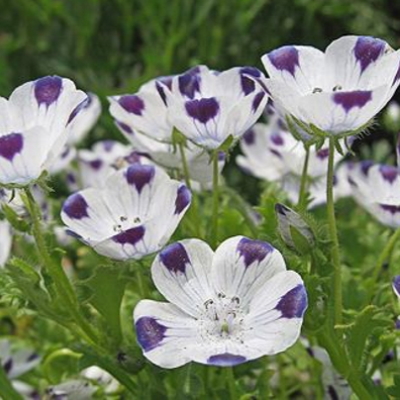
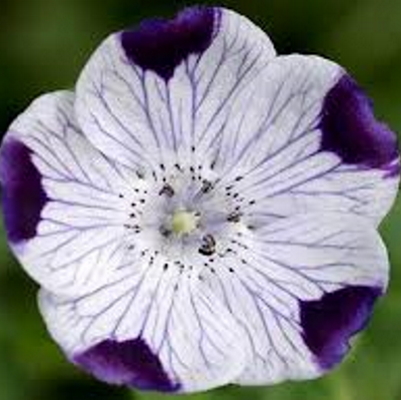 Five spot wildflowers are named for their distinct flowers: 2.5 cm light blue on white blossoms of five petals, each of which is tipped with a vivid, deep purple spot. They are reasonably compact plants that grow to 30 cm high and 20 cm wide and do not spread over the course of the summer. They prefer cool climates, germinating best in soil temperatures of 13-18 C. Perfect for cool springs. They should be able to survive if given lots of shade. They are annuals, and they’ll die back with the first frost. If allowed to die back naturally they reseeds and you will have new plants next year. They bloom consistently and impressively all spring long.
Five spot wildflowers are named for their distinct flowers: 2.5 cm light blue on white blossoms of five petals, each of which is tipped with a vivid, deep purple spot. They are reasonably compact plants that grow to 30 cm high and 20 cm wide and do not spread over the course of the summer. They prefer cool climates, germinating best in soil temperatures of 13-18 C. Perfect for cool springs. They should be able to survive if given lots of shade. They are annuals, and they’ll die back with the first frost. If allowed to die back naturally they reseeds and you will have new plants next year. They bloom consistently and impressively all spring long. -
Out of stock
 Tiny blue flowers are an iconic addition to any garden. Although not a ‘true’ forget-me-not, this species has very similar flowers. This easy-to-grow annual blooms just weeks after planting and grows in almost any sunny spot. Chinese Forget-Me-Not attracts bees, butterflies, and hummingbirds to the garden and makes for gorgeous cut flowers. Self-seeding annual.
Tiny blue flowers are an iconic addition to any garden. Although not a ‘true’ forget-me-not, this species has very similar flowers. This easy-to-grow annual blooms just weeks after planting and grows in almost any sunny spot. Chinese Forget-Me-Not attracts bees, butterflies, and hummingbirds to the garden and makes for gorgeous cut flowers. Self-seeding annual. -
Out of stock
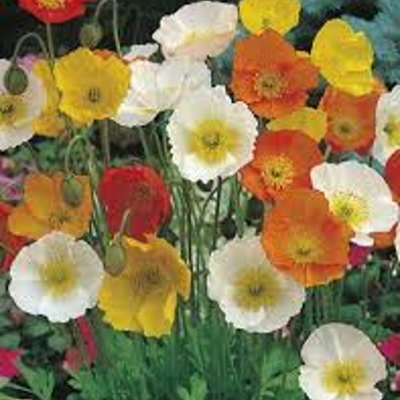 Papaver nudicaule. The Iceland Poppy is a hardy short-lived perennial. It self sows easily so will last for years to come. The cup-shaped blooms have a texture like crepe paper and appear in a range of subdued pastel colours; apricot, gold, tangerine, and white. Sow Iceland Poppy seeds in early spring or late fall where they are to grow permanently. The flower stalks grow to around 30cm tall and are among the longest-lasting poppies as cut flowers. Use a candlestick to seal the cut stem to prolong them as cut flowers. They are highly attractive to bees. Plant in late fall or early spring. Poppy seeds need to be cold stratified to germinate. Poppies only need soil that is ordinary and moist, but well-drained. The seeds should not be planted deeply; they just need to be compressed into the soil, as they need light to germinate. The best method for planting is to mix one part seed with 5 parts sand and scatter over the prepared growing area.
Papaver nudicaule. The Iceland Poppy is a hardy short-lived perennial. It self sows easily so will last for years to come. The cup-shaped blooms have a texture like crepe paper and appear in a range of subdued pastel colours; apricot, gold, tangerine, and white. Sow Iceland Poppy seeds in early spring or late fall where they are to grow permanently. The flower stalks grow to around 30cm tall and are among the longest-lasting poppies as cut flowers. Use a candlestick to seal the cut stem to prolong them as cut flowers. They are highly attractive to bees. Plant in late fall or early spring. Poppy seeds need to be cold stratified to germinate. Poppies only need soil that is ordinary and moist, but well-drained. The seeds should not be planted deeply; they just need to be compressed into the soil, as they need light to germinate. The best method for planting is to mix one part seed with 5 parts sand and scatter over the prepared growing area. -
Out of stock
 Single daisy-like flowers in shades of pink, red, rose, or white completely cover the 75 cm high bushy plants from May through June. Gorgeous spring and summer colour in sun or partial shade. Invaluable for cutting, cut as soon as colour shows. If cutting for dried flowers harvest immediately after bloom opens. Avoid high fertility. Moist, well-drained soil is best–try raised beds or containers if your soil is heavy. Hardy to Zone 5 with protection. These daisies often self-seed and interestingly, direct sown or self-sown established plants are hardier than transplants.
Single daisy-like flowers in shades of pink, red, rose, or white completely cover the 75 cm high bushy plants from May through June. Gorgeous spring and summer colour in sun or partial shade. Invaluable for cutting, cut as soon as colour shows. If cutting for dried flowers harvest immediately after bloom opens. Avoid high fertility. Moist, well-drained soil is best–try raised beds or containers if your soil is heavy. Hardy to Zone 5 with protection. These daisies often self-seed and interestingly, direct sown or self-sown established plants are hardier than transplants. -
Out of stock
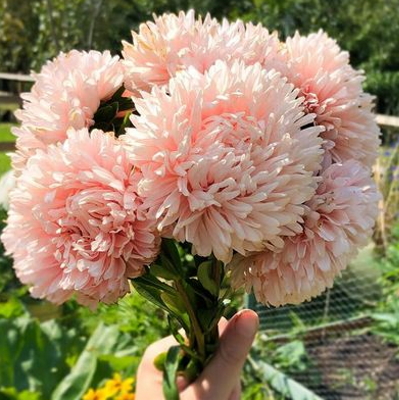
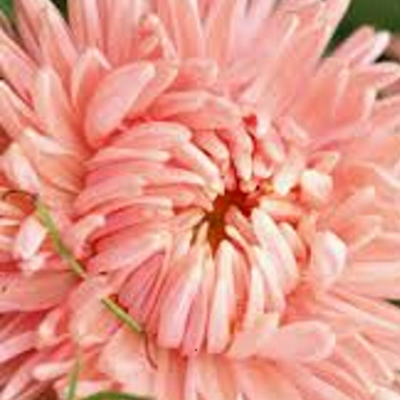 This annual aster provides soft peach-pink blossoms about 6-8 cm in diameter. They are relatively moderately easy to grow when following the seeding and growing guidelines. Cut blooms last 7-10 days while garden blooms last 14-20 days. Blooms will top 90 cm stems and will bloom all summer. Cut all spent flowers to promote prolong and enhance bloom duration.
This annual aster provides soft peach-pink blossoms about 6-8 cm in diameter. They are relatively moderately easy to grow when following the seeding and growing guidelines. Cut blooms last 7-10 days while garden blooms last 14-20 days. Blooms will top 90 cm stems and will bloom all summer. Cut all spent flowers to promote prolong and enhance bloom duration. -
-
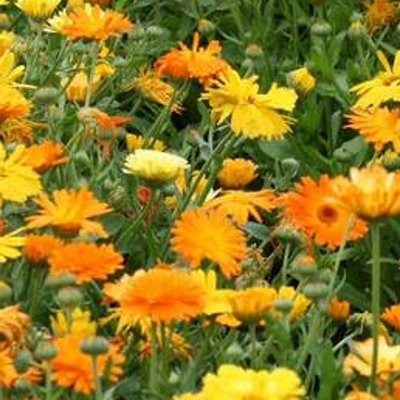
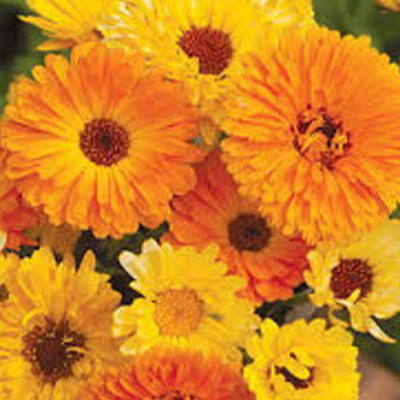 Calendula are actually short-lived tender perennials that are grown as annuals in Canada. Large 10 cm blooms in a nice range of colours -apricot, cream, orange and yellow. They flower generously through the summer on well-branched plants that grow to 45 cm in height. Calendula is also known as the pot marigold and grows nicely in containers! One of the easiest flowers to grow. Try using petals in salads. Pick when in full bloom to dry for homemade teas, soaps, and calendula cream. Calendula is a versatile plant that can be used for it's culinary and healing properties and for long-lasting cut flowers.
Calendula are actually short-lived tender perennials that are grown as annuals in Canada. Large 10 cm blooms in a nice range of colours -apricot, cream, orange and yellow. They flower generously through the summer on well-branched plants that grow to 45 cm in height. Calendula is also known as the pot marigold and grows nicely in containers! One of the easiest flowers to grow. Try using petals in salads. Pick when in full bloom to dry for homemade teas, soaps, and calendula cream. Calendula is a versatile plant that can be used for it's culinary and healing properties and for long-lasting cut flowers. -
-
Out of stock

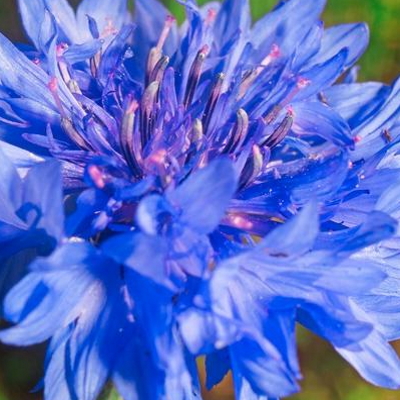 Bachelor's Button or Cornflower-It's hard to beat the colours of the bachelor's button. It got the name "cornflower" because it grew as a weed in cornfields, but you may welcome it in your garden. It does spread, but it is easy to pull out any extras. This tall 90 cm mix comes in the colours of purple, blue, pink and white provide papery blossoms that bring summer colour to the garden. They're attractive planted in a group in a corner or open spot in the garden. Deadhead regularly to prolong blooming. Plant periodically over spring to prolong bloom times.
Bachelor's Button or Cornflower-It's hard to beat the colours of the bachelor's button. It got the name "cornflower" because it grew as a weed in cornfields, but you may welcome it in your garden. It does spread, but it is easy to pull out any extras. This tall 90 cm mix comes in the colours of purple, blue, pink and white provide papery blossoms that bring summer colour to the garden. They're attractive planted in a group in a corner or open spot in the garden. Deadhead regularly to prolong blooming. Plant periodically over spring to prolong bloom times. -
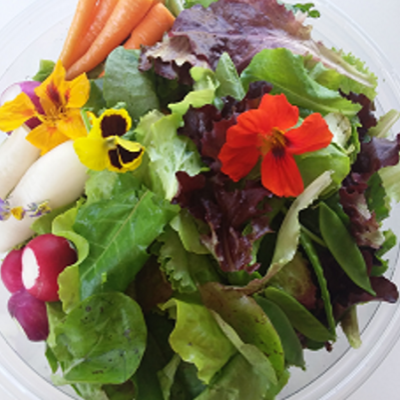 Nasturtium is a cheerful, easy, quick-growing annual flower! They’re colorful, edible flowers, and good for kids to plant. Salad Blend nasturtiums feature spurless, half-double flowers in tangerine, soft salmon, deep gold, deep mahogany, bright scarlet, cream, and cherry-rose. Pick and wash a handful of these bright summer flowers and just tear them into pieces over a summer salad. The result transforms a simple salad into a work of art. They’re also great for companion planting as a fantastic trap crop; the mustard oil they produce is adored by garden pests. After seeding, plants appear in 7 to 10 days.
Nasturtium is a cheerful, easy, quick-growing annual flower! They’re colorful, edible flowers, and good for kids to plant. Salad Blend nasturtiums feature spurless, half-double flowers in tangerine, soft salmon, deep gold, deep mahogany, bright scarlet, cream, and cherry-rose. Pick and wash a handful of these bright summer flowers and just tear them into pieces over a summer salad. The result transforms a simple salad into a work of art. They’re also great for companion planting as a fantastic trap crop; the mustard oil they produce is adored by garden pests. After seeding, plants appear in 7 to 10 days. -
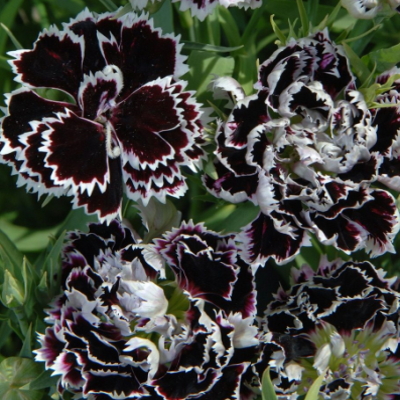 Hardy annual. Dainty, fully double blooms in deepest maroon, almost black, edged in brilliant white. The margins of the petals are heavily frilled, and the overall effect is one of great dignity and refinement, yet stunning beauty. The 2-3 cm blooms are sweetly fragrant. Makes a fine cut flower but really shines in a massed planting. Compact plants, the flowers are held above the grass-like foliage, reaching about a foot in height.
Hardy annual. Dainty, fully double blooms in deepest maroon, almost black, edged in brilliant white. The margins of the petals are heavily frilled, and the overall effect is one of great dignity and refinement, yet stunning beauty. The 2-3 cm blooms are sweetly fragrant. Makes a fine cut flower but really shines in a massed planting. Compact plants, the flowers are held above the grass-like foliage, reaching about a foot in height. -
-

Excellent series for cut flower production.
Features tall spires of dense florets. All colours produce double blooms with a small percentage of singles. 3-4 cm florets on 30-40 cm flower spikes. The mix includes; carmine, dark blue, light blue, light pink, lilac, rose, and white. Attracts hummingbirds. Plant height is 90-120 cmAll parts of this plant are poisonous, including the seeds. Exercise extreme caution around children and pets. The purchaser assumes all liability relating to the use of this product. -
 Bridal Silk is a Shirley poppy. Shirley poppies thrive in cool temperatures and must be sown when the soil is still cold. 'Bridal Silk' has glistening pure-white chalice-shaped flowers in glorious bloom during early summer, new flowers opening every morning as the old flowers shed their petals. These plants prefer evenly moist soil but can tolerate drought. About an inch of water per week is more than sufficient once they are established. Plant height 45-60 cm.
Bridal Silk is a Shirley poppy. Shirley poppies thrive in cool temperatures and must be sown when the soil is still cold. 'Bridal Silk' has glistening pure-white chalice-shaped flowers in glorious bloom during early summer, new flowers opening every morning as the old flowers shed their petals. These plants prefer evenly moist soil but can tolerate drought. About an inch of water per week is more than sufficient once they are established. Plant height 45-60 cm. -
-
 This cheerful variety will be the star of your cutting garden! An unexpected beauty, it has seemingly endless combinations of red, rose, scarlet, lavender, gold, yellow, salmon, orange, and pink. A perfect choice for beautiful bouquets all summer. Dahlia Flowered Mix zinnias are super showy border plants that grow 90-110 cm tall
This cheerful variety will be the star of your cutting garden! An unexpected beauty, it has seemingly endless combinations of red, rose, scarlet, lavender, gold, yellow, salmon, orange, and pink. A perfect choice for beautiful bouquets all summer. Dahlia Flowered Mix zinnias are super showy border plants that grow 90-110 cm tall -
-
-
 Double flowers with a silky appearance in shades of pink, white, red, rose, and salmon on 80 cm stems. Strong plants perform well in the heat and drought even though they are considered a cool-season plant. Sow Shirley Double Mix poppy seeds at two-week intervals from late February to mid-April for flowers from mid- to late summer. These poppies will self-sow, and they look spectacular in mass plantings. The flowers have a very delicate appearance, but the plants are actually quite tough. For cut flowers use a candle to sear the stem ends to help them last several days. Rely on Shirley Double to self-sow without becoming weedy.
Double flowers with a silky appearance in shades of pink, white, red, rose, and salmon on 80 cm stems. Strong plants perform well in the heat and drought even though they are considered a cool-season plant. Sow Shirley Double Mix poppy seeds at two-week intervals from late February to mid-April for flowers from mid- to late summer. These poppies will self-sow, and they look spectacular in mass plantings. The flowers have a very delicate appearance, but the plants are actually quite tough. For cut flowers use a candle to sear the stem ends to help them last several days. Rely on Shirley Double to self-sow without becoming weedy. -
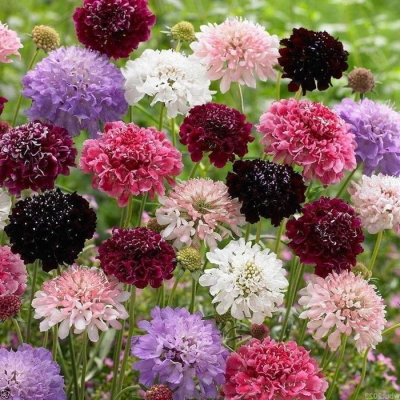 Scabiosa Imperial Mix seeds are also known as the Pincushion Flower. Fully double flowers in rose, pink, purple, lavender, maroon, and white. Flowers are 8cm across and almost ball-shaped, appearing from mid-summer to frost. Start indoors 4-5 weeks before last frost, or direct sow outdoors in autumn. This giant mix has a plant height of 78-104cm. Scabiosa flowers are unusually generous with nectar. Bring some cut flowers indoors and enjoy their fragrant scent in flower arrangements.
Scabiosa Imperial Mix seeds are also known as the Pincushion Flower. Fully double flowers in rose, pink, purple, lavender, maroon, and white. Flowers are 8cm across and almost ball-shaped, appearing from mid-summer to frost. Start indoors 4-5 weeks before last frost, or direct sow outdoors in autumn. This giant mix has a plant height of 78-104cm. Scabiosa flowers are unusually generous with nectar. Bring some cut flowers indoors and enjoy their fragrant scent in flower arrangements. -
